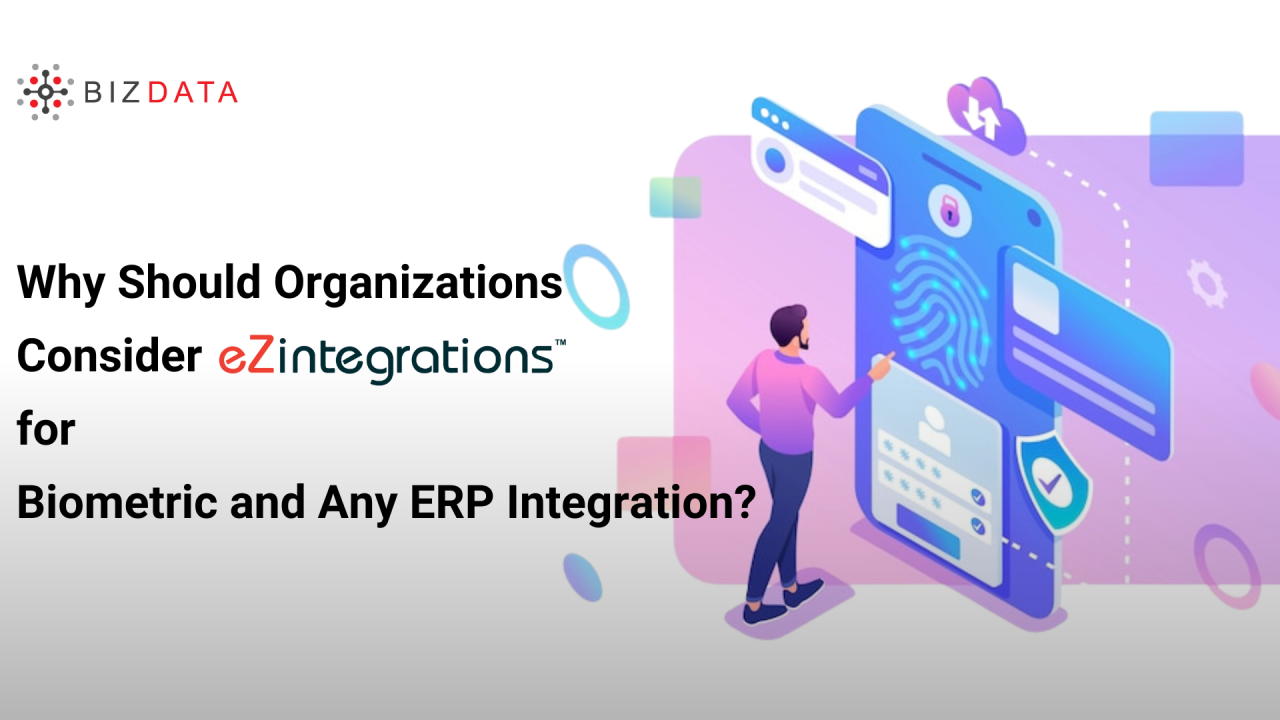
Why Should Organizations Consider eZintegrations? for Biometric and Any ERP Integration?
Bizdata Inc
Integrate, Visualize & Innovate. Self-Service Big Data & Advanced Analytics, Integration platform as a service (iPaaS)
In today’s fast-paced business environment, managing a diverse workforce of permanent and contract employees is a complex challenge. Tracking attendance, managing payroll, and ensuring compliance can be daunting without the right tools. Integrating biometric systems with any ERP Integration offers a modern solution to these challenges, providing accuracy, security, and efficiency. This newsletter explores real-world insights from a software company’s case study, highlighting how this integration transforms workforce management.
The Workforce Management Challenge
Managing a hybrid workforce spread across multiple locations, including permanent and contract employees, presents several difficulties:
These challenges resulted in inefficiencies and inconsistencies in day-to-day workforce management.
Data Integration Problems with Biometric Systems
Biometric systems capture sensitive, unique data (e.g., fingerprints, facial recognition, iris scans) to verify identity. However, integrating this data with any ERP integration introduces several data challenges:
These issues emphasize the need for a robust integration solution that ensures secure, accurate, and efficient handling of biometric data.
The Solution: eZintegrations? and Any ERP Integration
To address these challenges, eZintegrations?, a cloud-based integration platform designed to streamline data flow between biometric systems and any ERP integration. eZintegrations? offers a no-code or low-code approach, making integration possible without extensive IT resources.
Key Features of eZintegrations?:
This integration allows the enterprise to automate time tracking, streamline payroll processes, and ensure compliance with labor laws, leading to improved operational efficiency and reduced errors.
领英推荐
Real-World Use Case: A Software Corporation
A major software corporation that employed both permanent and contract workers for projects in Chicago and Los Angeles faced operational challenges:
Solution:
By integrating biometric systems with Oracle Time and Labor Cloud through eZintegrations?, the company centralized its data, automated attendance tracking, and streamlined payroll processing. This reduced errors and inefficiencies, leading to greater operational efficiency.
Results:
70% improvement in payroll accuracy: Automation reduced manual data entry errors.
50% reduction in compliance issues: The system ensured adherence to local labor laws across different regions.
Business Benefits of Biometric Integration
Take the Next Step:
Discover the Future of Time Management: Dive into the Demo Video
Unveil the Full Potential: Explore More
Experience It Yourself: Start Your Free Trial and see the difference!
Co-Founder & Chief Product Officer | Hire Enterprise AI Agents and AI Workforce & improve productivity 20x
3 周Very informative